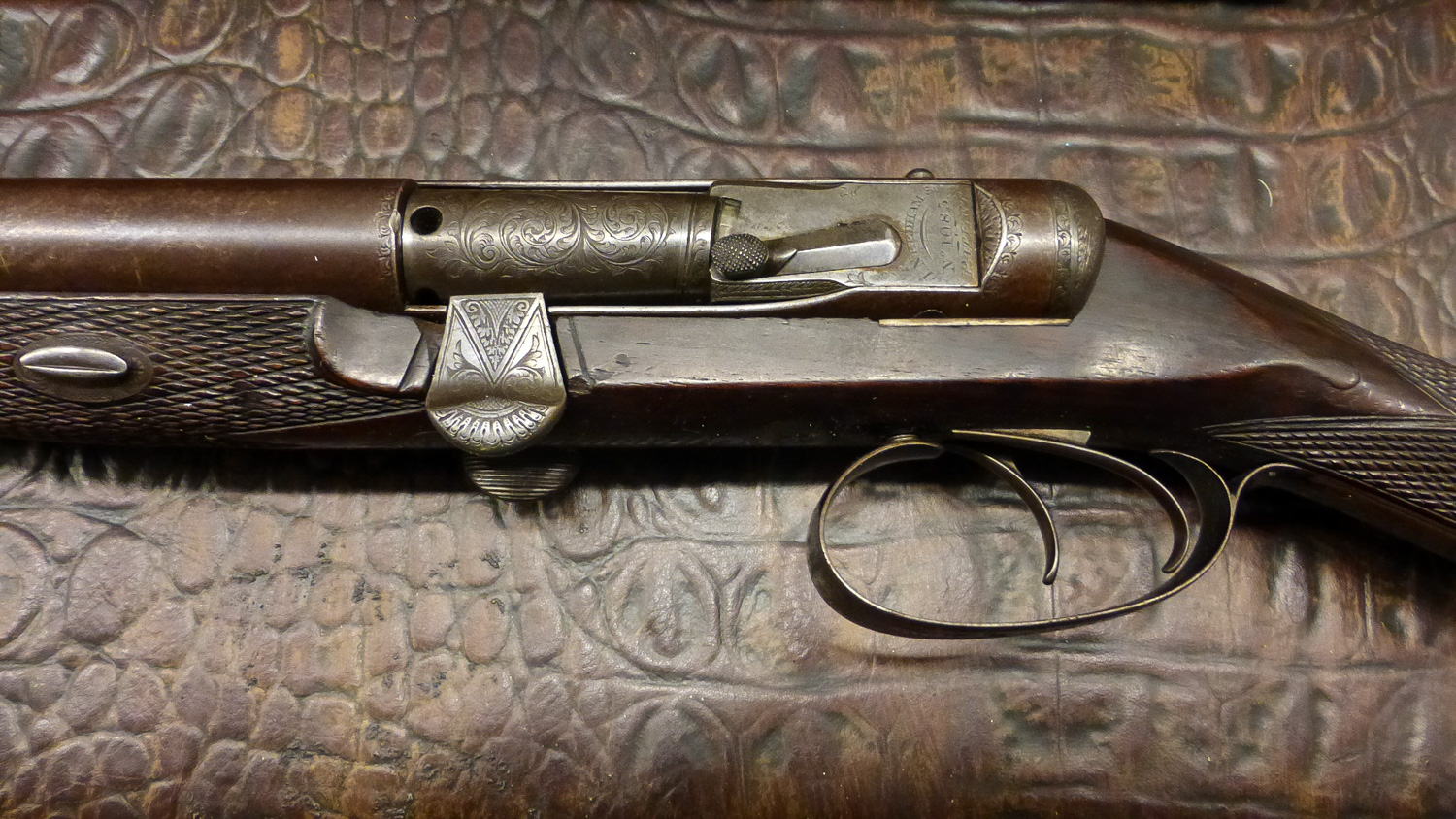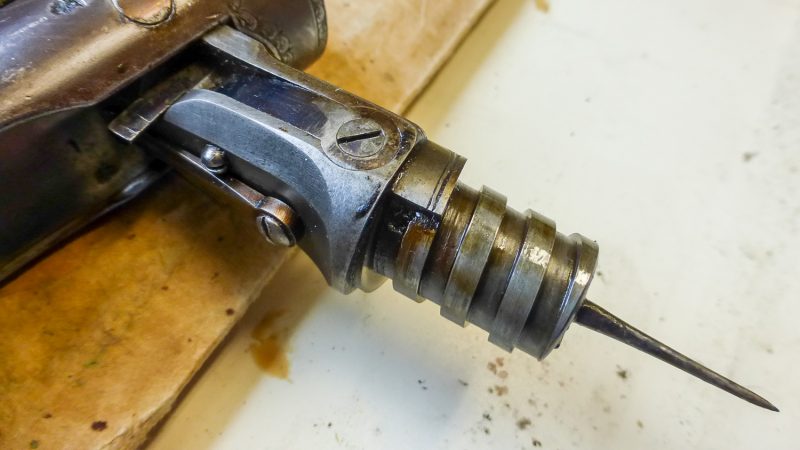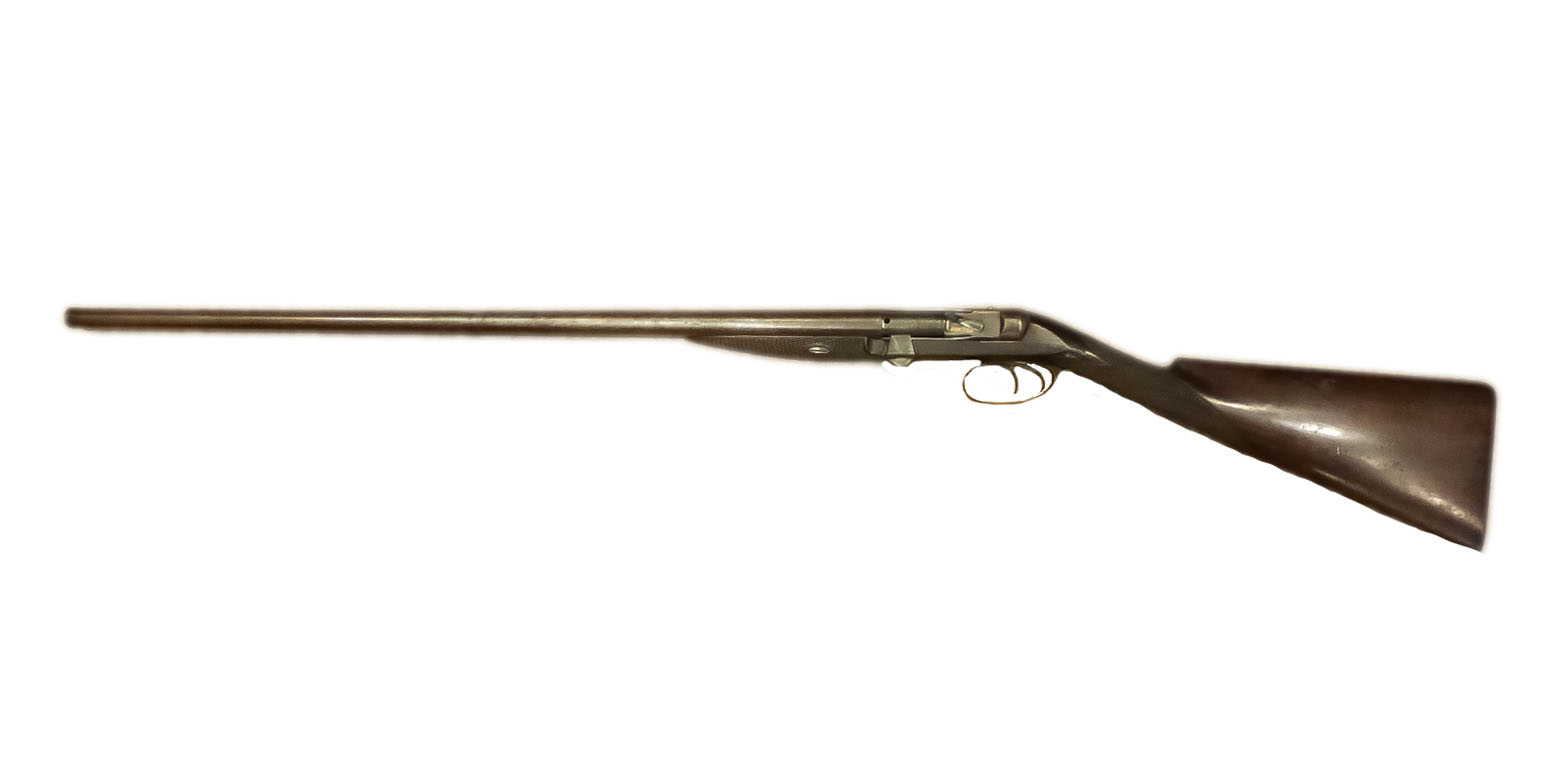
FROM MUZZLE TO CENTER
The transition from muzzle-loader to breech-loader took place relatively quickly in the 1860s. Within a few years the age-old method of loading shotguns and rifles from the muzzle disappeared.
This change took place rapidly, but not easily and in a straight line. Rather, there were numerous solutions, which often led into a dead end. It took many developments by many different gunsmiths before the centerfire system finally became established in the mid-1860s.
One of these inventions along the way was the needle-fire system. It was originally developed by the Prussian Johann Nikolaus von Dreyse, who had once worked for the French gunsmith Pauly in Paris. The Dreyse needle-fire rifle -patented in Great Britain in 1831 and 1835 – was introduced by the Prussian army and proved to be very effective in two successful wars against the Danes in 1864 and against Austria in 1866.
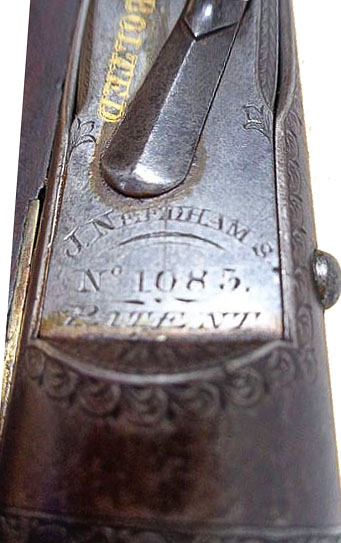
Needham got the inspiration for his needle-fire from Dreyse.
The system was originally intended for military rifles, but was later also installed in shotguns. Among the most successful hunting shotguns with the needle-fire system were those built by Joseph Needham under patent number 184 dated 2 October 1852.
THE NEEDHAMS
The Needhams were originally gunsmiths in Birmingham. In 1844 William Needham went to London and established his business in 26 Picadilly. From 1851 he operated under the name of William and Joseph Needham.

FUNCTION
Bolts were fitted to either barrel and, to operate the system, the bolt lever was turned upwards to unlock, enabling the bolt to be swung out sideways. At the same time two cams on the inside of the head of the bolt forced the needle back against a spiral mainspring. With the bolt open, a cartridge could be inserted, the bolt then closed and locked, enabling the gun to be fired.
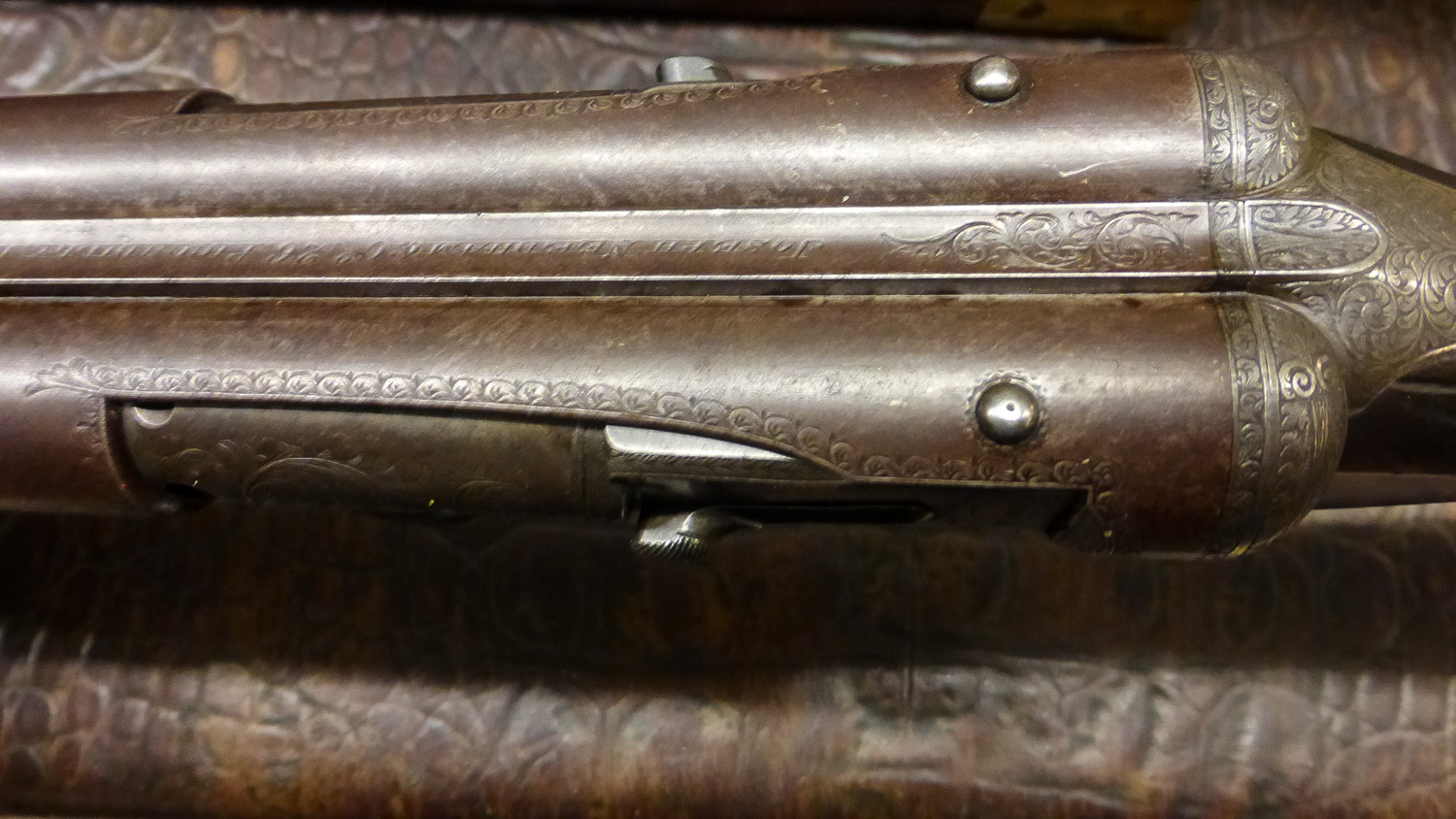
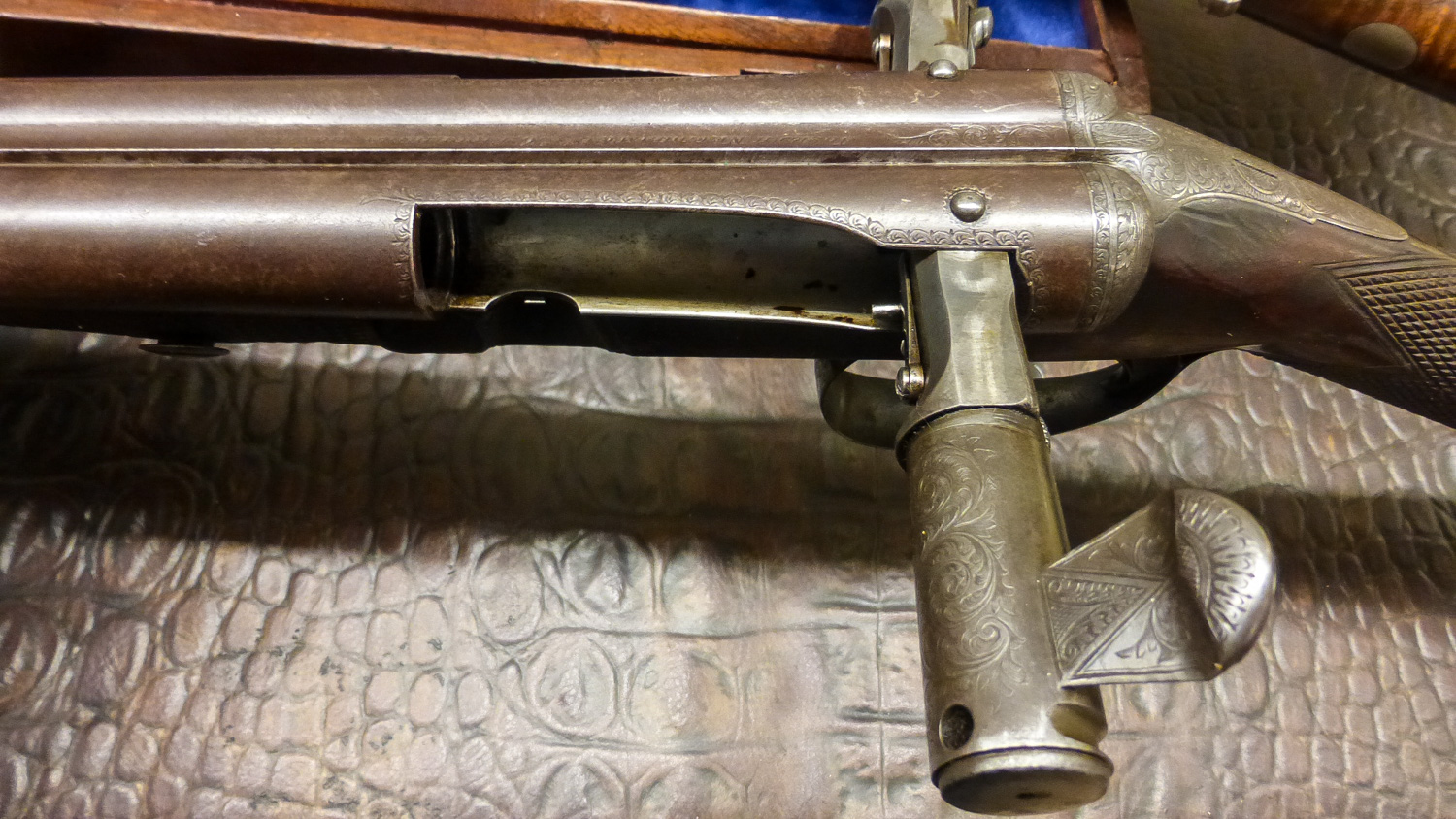
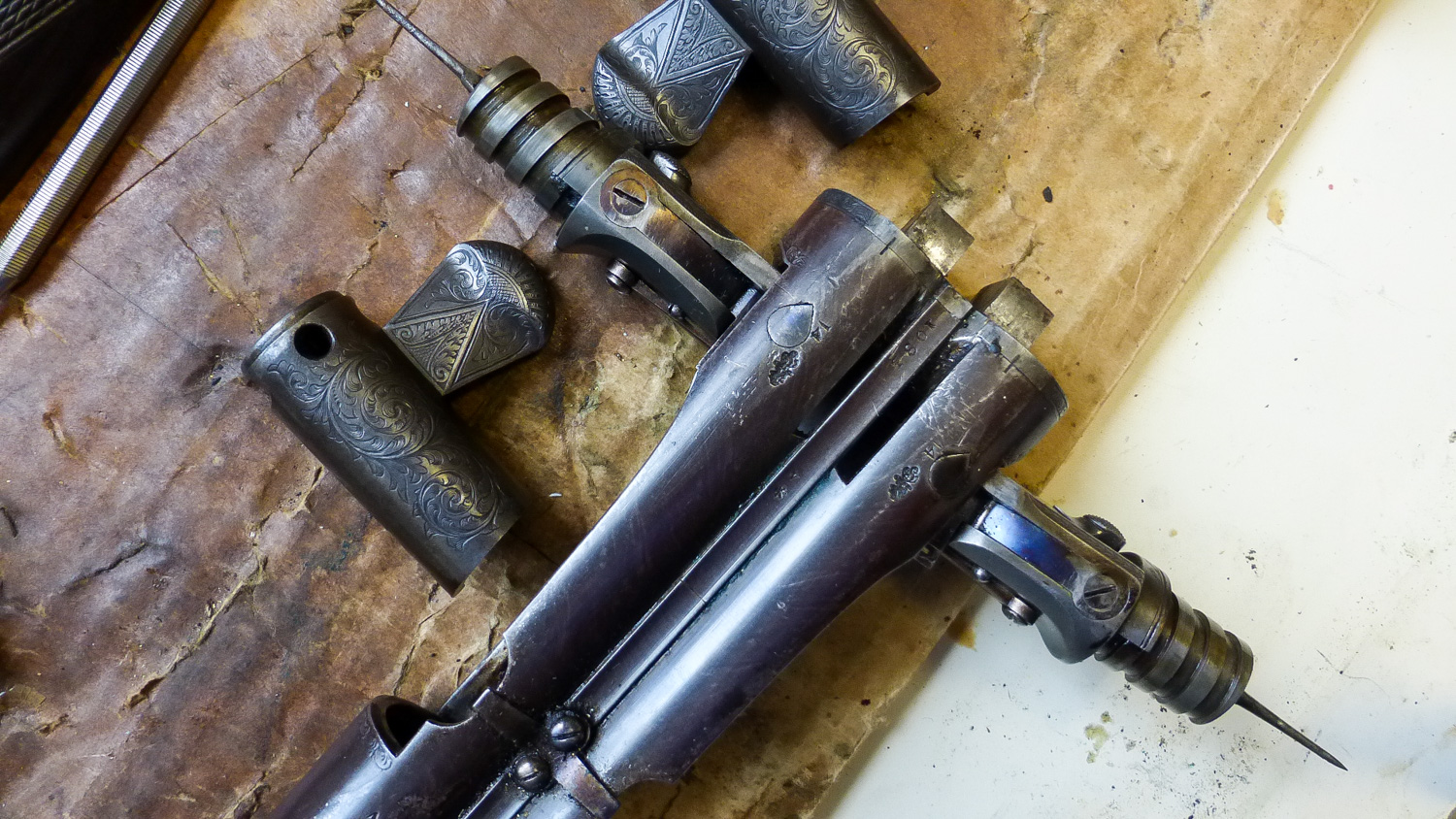

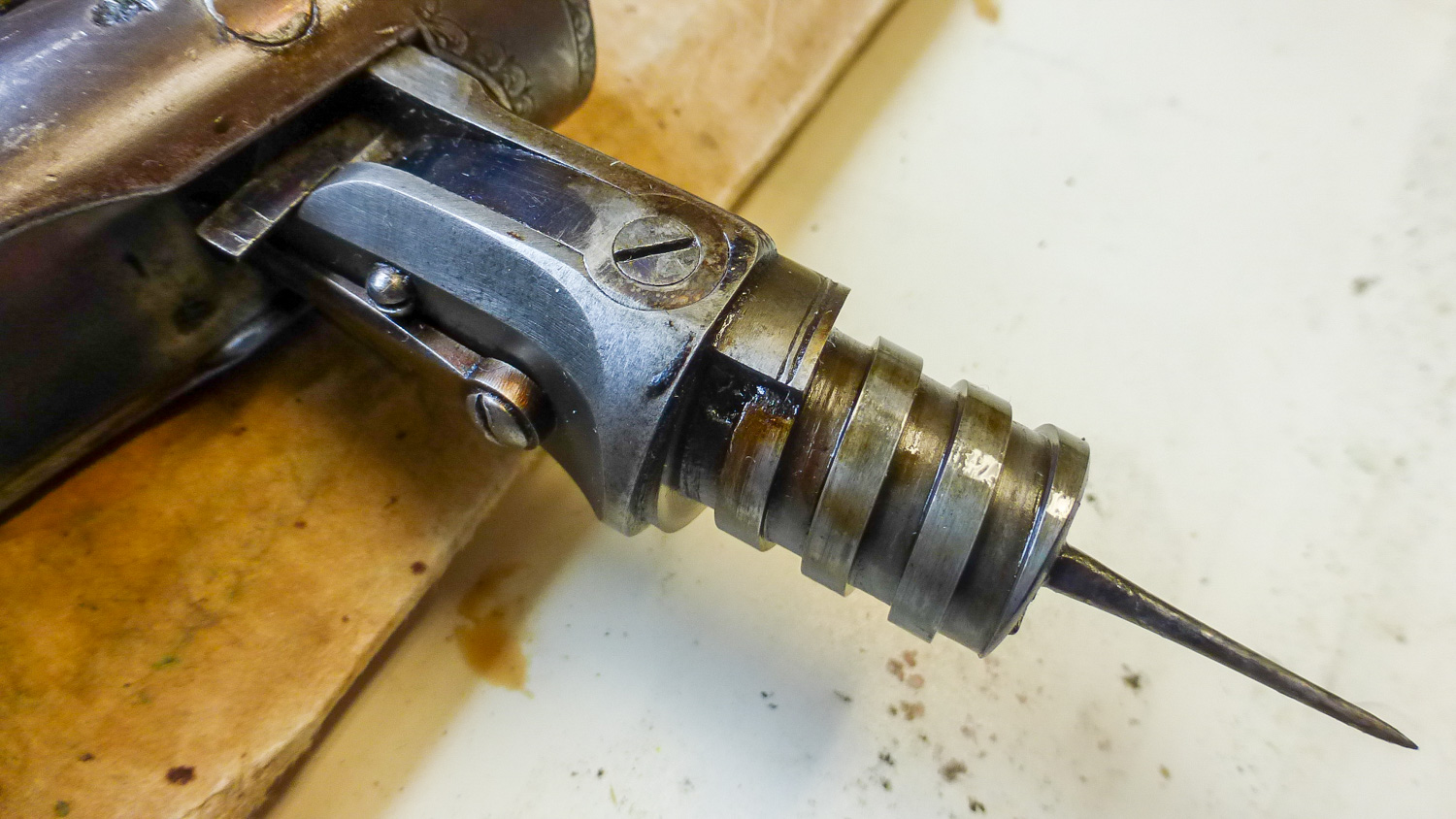
The Needham was the first hammerless gun to be produced in large numbers, with part of the success being due to the fact that it was built under license by the highly respected John Rigby company in Dublin.
The needle-fire shotgun technology was very sophisticated and expensive to produce. Accordingly, they were only built as “best guns”.
The example illustrated is a 14 bore double gun by Joseph Needham no. 1083. The top rib is signed “Joseph Needham & Co, 26 Piccadilly, London”. The bolts have their own individual safety catches and are stamped with the name of Joseph Brazier.
Joseph Brazier was originally a gun-locksmith firm, based in Wolverhampton, England, having begun as a family business around 1700 in London. The firm was very active in the 19th century, and was well known as a manufacturer of precision locks for rifles – including some used in the American Civil War – and the American Hawken plains rifle.
Today[when?] Joseph Brazier manufactures precision interchangeable parts, components, and one solid piece over/under shotgun barrels as well as side-by-side and double rifle barrels. The company maintains offices in Arundel, UK and Colorado Springs, Colorado, USA. Karl C. Lippard is the current[when?] Managing Director. From: wikipedia.org
In many ways, needle-fire guns were ahead of their time as they were hammerless and quite modern in appearance. They are collectors’ pieces and, as they are high quality, are quite sought after as something a little bit different and quirky.
